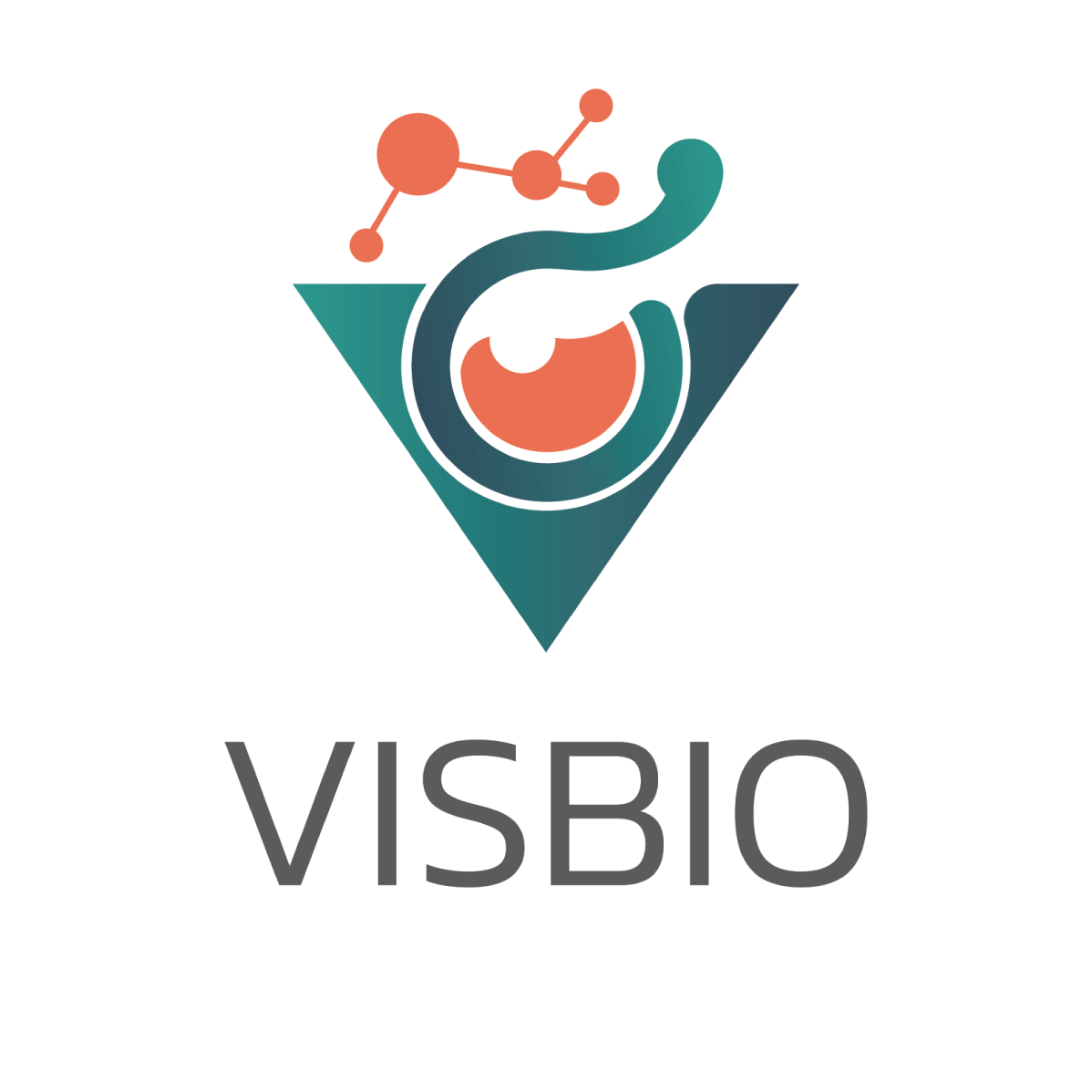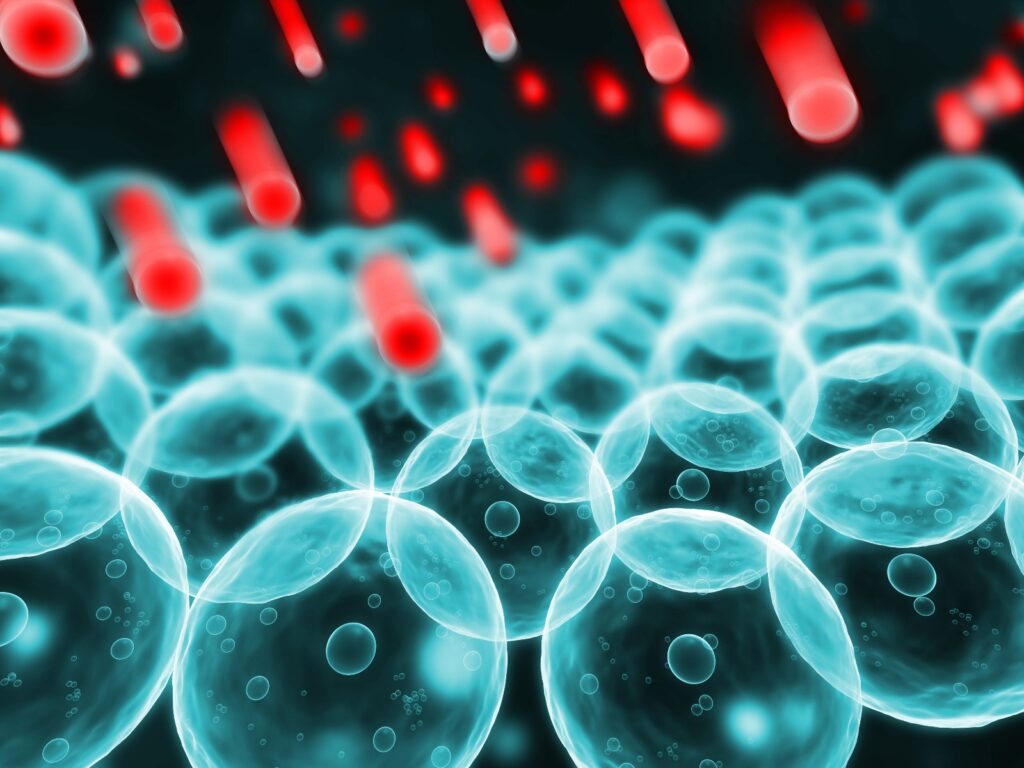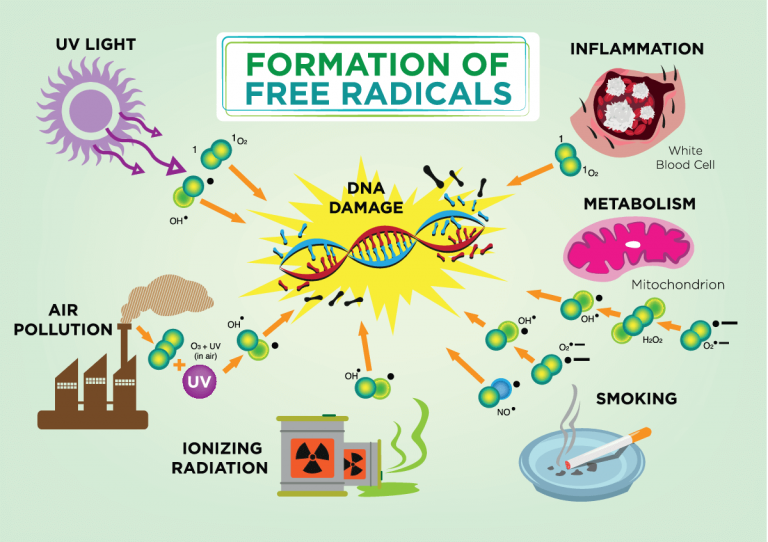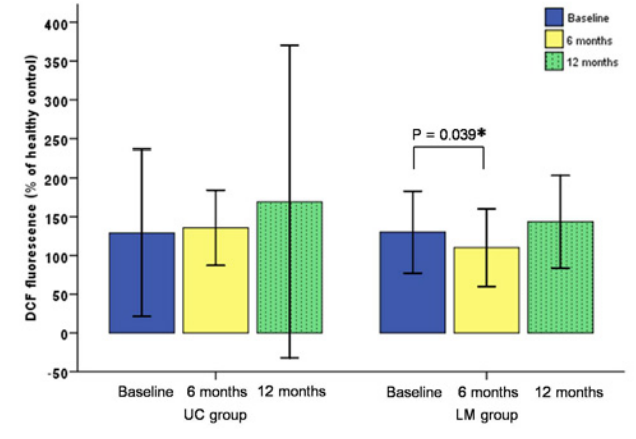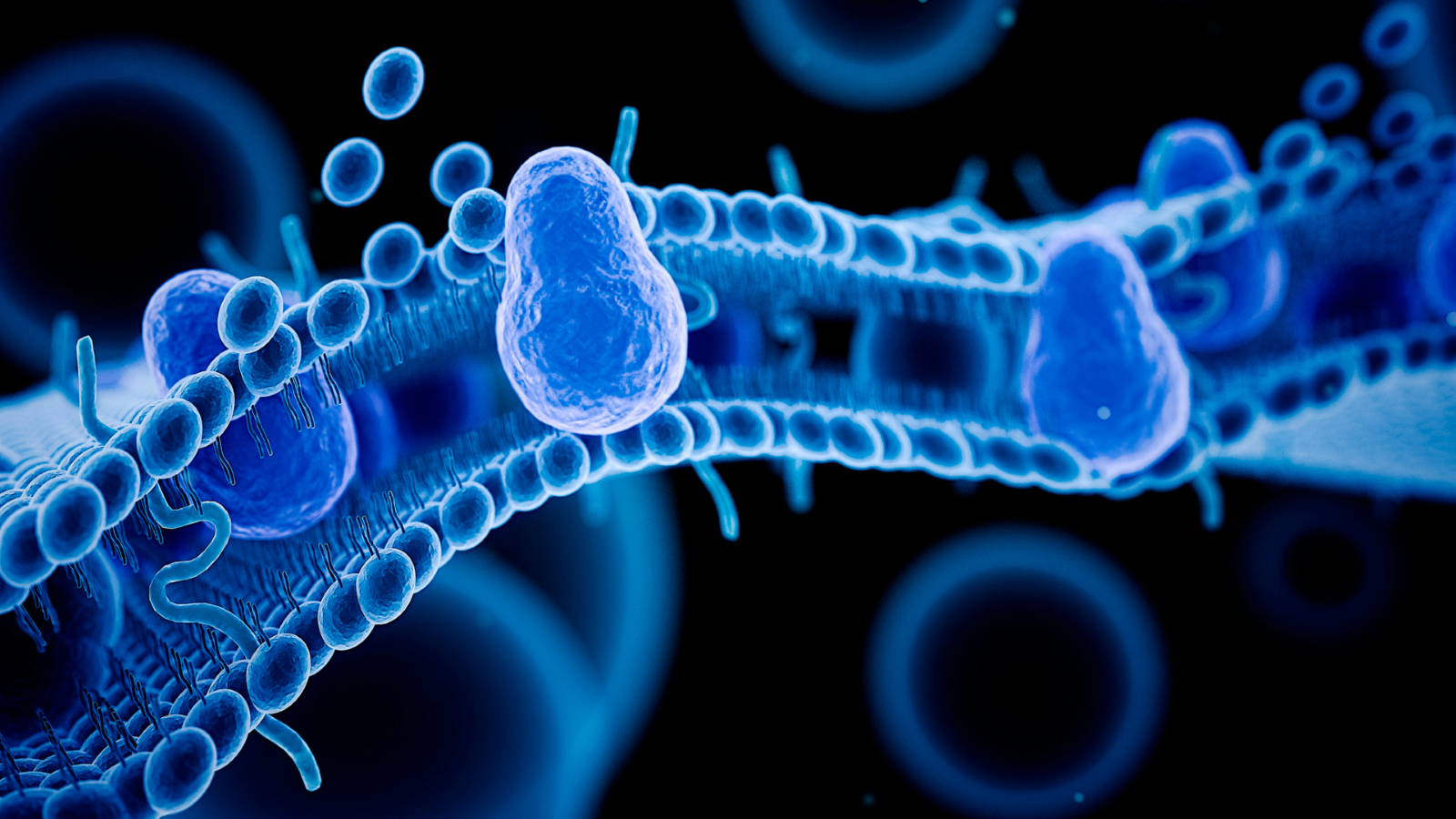
Information about antioxidant testing services, studying %Reactive Oxygen Species (ROS).
VISBIO Co., Ltd. provides antioxidant testing and analysis services to study %Reactive Oxygen Species (ROS). Our scientific experts conduct these tests by culturing cancer cells under 2D Cell Culture. This service is available for products in the health and beauty industry or food and beverage industry.
Free radicals or Reactive Oxygen Species (ROS) are molecules or ions with unpaired electrons located outside the nucleus. They are unstable molecules and highly reactive in chemical reactions. Therefore, they interact with various molecules within the body to stabilize themselves. When free radicals occur, they lead to the continuous destruction of other molecules, resulting in inflammation, wrinkles, and various diseases. Currently, there is extensive research on herbs extracts such as herbs and various types of medicine with significant antioxidant or anti-cancer properties. Consequently, testing for analyzing antioxidant properties are being developed, such as analyzing the antioxidant properties related to oxygen compounds (%ROS) of various extracts within cancer cells.
Understanding Free Radicals: What Are They?
Free radicals are molecules or substances lacking one electron, making them unstable and highly reactive with biological molecules inside cells, such as lipids, proteins, and DNA. Free radicals can pull electrons from other molecules, forming new free radicals. As a result, it causes other molecules to lose electrons, forming new free radical molecules. These newly created free radicals have the ability to strip electrons from other substances, initiating a chain reaction.
There are 3 major groups of free radicals:
- Reactive Oxygen Species (ROS): This group includes molecules with oxygen as a key component, like Superoxide anion (O2•−), Hydroxyl (HO•), Hydroperoxyl (HO2• ), Peroxyl (RO2•), Alkoxyl (RO•), Carbonate (CO3 -•), and Carbon dioxide (CO2 -•).
- Reactive Nitrogen Species (RNS): This group contains nitrogen-related radicals like Nitric oxide radical (NO•) and Nitrogen dioxide radical (NO2•).
- Reactive Chlorine Species (RCS): This group comprises chlorine-related radicals such as Atomic chlorine (Cl•).
Free radicals can be classified into two categories: Endogenous reactive species (those produced within the body) and exogenous reactive species (those generated outside the body). Exogenous sources include cigarette smoke, insecticides, UV radiation, heat, air pollution, and inflammation. The presence of free radicals can damage various cellular components, leading to diseases like aging, cancer, cardiovascular disease, Alzheimer, allergies, high blood pressure, vision problems, and nervous system disorders.
The Importance of Reactive Oxygen Species (ROS) and Their Connection to Health
Free radicals are highly reactive molecules that can engage in chemical reactions with biological molecules, which are components of cells, both in the form of Reactive Oxygen Species (ROS) and Reactive Nitrogen Species (RNS). Free radicals, whether they are free radicals or not, stimulate oxidative reactions, leading to the constant generation of free radicals in all living organisms that respire using oxygen.
ROS is produced during the metabolism of food, energy production processes, and cellular respiration. Additionally, the body uses ROS as part of its defense mechanisms against various pathogens. However, if the body produces an excessive amount of ROS or lacks antioxidants, it can lead to the accumulation of ROS and result in oxidative stress. While short-term oxidative stress may not significantly impact health, prolonged exposure to high ROS levels can cause damage to various tissues, cell membranes, and DNA, contributing to a range of diseases in various systems. These diseases include cardiovascular conditions, neurological issues like Parkinson’s and Alzheimer’s, endocrine disorders, cancer, and even skin aging.
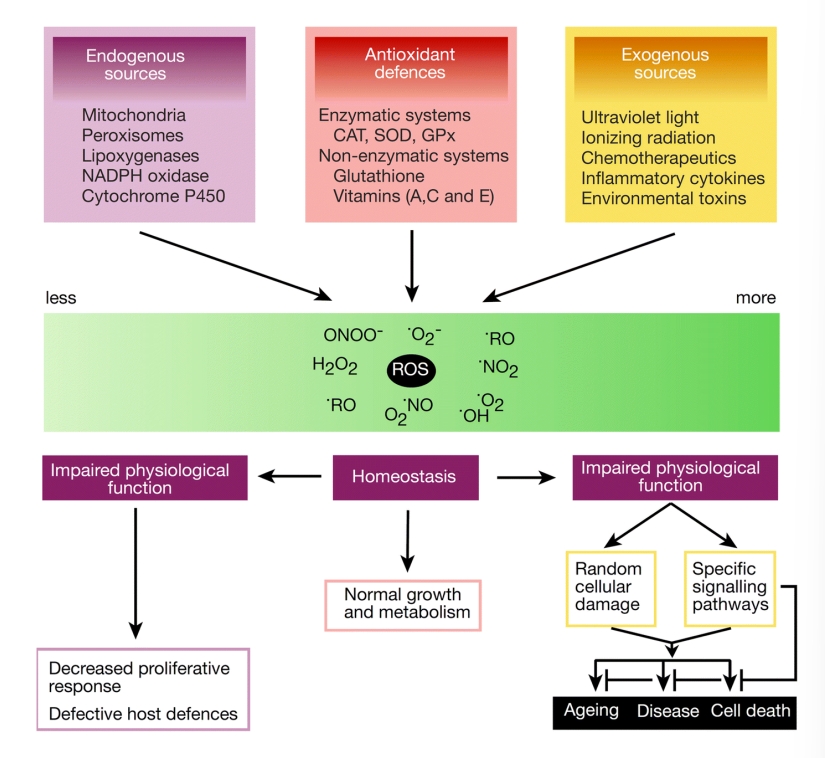
The Benefits of Antioxidants for Reducing %ROS
Antioxidants are substances that help protect and slow down the occurrence of oxidation reactions in the body. They assist in eliminating and reducing the quantity of free radicals that can harm cellular components. Living organisms produce antioxidants to bind with the free radicals generated in the body, helping reduce the levels of free radicals and prevent tissue damage. To enhance these antioxidant effects, it is essential to consume foods rich in antioxidants, such as beta-carotene, lycopene, vitamin C, vitamin E, and vitamin A, found in various fruits and vegetables. These dietary antioxidants supplement the body’s natural antioxidant production, which may not always be sufficient to combat free radicals effectively.
Moreover, there are several ways to reduce the levels of %ROS within cells. These include consuming antioxidant-rich foods like vitamin C and vitamin E, engaging in physical exercise, and managing stress. In addition, research and development have explored herbs extracts from plants and herbs with significant abilities to reduce %ROS levels within cells. These include substances derived from berries extract, eggplants or garlic.
Analyzing the Antioxidant Activity of the %ROS by 2D Cancer Cells Culture
Currently, research is underway on natural extracts, including herbs and various medicinal compounds, known for their significant antioxidant and anti-cancer effects. Consequently, multiple methods for analyzing antioxidant activity have been developed, such as the measurement of %ROS levels within cancer cells can be performed using the DCFH-DA assay. This method involves introducing a light-sensitive substance, DCFH-DA (2,7-dichlorofluorescin-diacetate), into the cells. DCFH-DA is a non-fluorescent compound that can permeate cell membranes. When DCFH-DA enters cells, the esterase enzyme within the cells removes diacetate groups from DCFH-DA molecules, producing DCFH with increased fluorescence. Consequently, the free radicals within the cells can oxidize DCFH, generating DCF (2,7-dichlorofluorescein), a fluorescent substance.
The fluorescence emitted is measured as an index to determine the %ROS levels within cancer cells. The results report the level of ROS production in cancer cells by comparing the DCF fluorescence signals to a control group of normal cells. The average relative fluorescence unit values, obtained by measuring the fluorescence intensity of DCF in cells incubated with the serum of normal cells, are set as 100%.
Example of Reporting the Results of Analyzing the Antioxidant Activity of the %ROS Inside Cancer Cells through Enzymatic Activity
The figure shows the levels of ROS generation in HCAEC cells presented as DCF fluorescence (% of healthy control) (*p < 0.05, paired t-test before and after entering the program)
Literature:
- โกสินทร์ วิระษร และคณะ, ภาวะถูกออกซิไดซ์เกินสมดุลและสารต้านออกซิเดชั่นกับโรคมะเร็ง, ศรีนครินทร์ เวชสาร คณะแพทยศาสตร์ มหาวิทยาลัยขอนแก่น.
- อนงนาฎ ไพนุพงศ์, อนุมูลอิสระและสารต้านอนุมูลอิสระกับสุขภาพ, วารสารวิทยาศาสตร์และเทคโนโลยี มหาวิทยาลัยราชภัฏภูเก็ต, Vol. 1(2), 2017.
- เบ็ญจมาศ จิตรสมบูรณ์, รายงานการวิจัยการตรวจสอบความเป็นพิษและฤทธิ์ทางชีวภาพของว่านขันหมาก, สำนักวิชาวิทยาศาสตร์ มหาวิทยาลยัเทคโนโลยีสุรนารี, กันยายน 2560.
- อธิป สกุลเผือก, อนุมูลอิสระและสารต้านอนุมูลอิสระ ที่มา: สภาเภสัชกรรม
- เอมอร แสงศิริ และคณะ, การเปลี่ยนแปลงจำนวนเซลล์มีชีวิต การสร้างสารอนุพันธ์ของออกซิเจน และภาวะเครียดจากออกซิเดชันในผู้ป่วยโรคหลอดเลือดหัวใจตีบสูงอายุที่ได้ปรับเปลี่ยนพฤติกรรมการดำเนินชีวิต, Chula Med J Vol. 54 No. 1 January – February 2010
- จารวี สุขประเสริฐ, 2550, การเกิดและการป้องกันอนุมูลอิสระในตัวคุณ, กลุ่มฝึกอบรมเทคนิคทางห้องปฏิบัติการวิทยาศาสตร์ชีวภาพ สํานักพัฒนาศักยภาพนักวิทยาศาสตร์ห้องปฏิบัติการ
